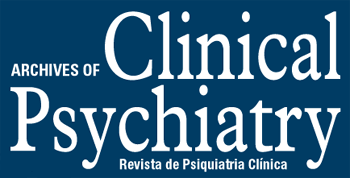Resumo em Português:
INTRODUÇÃO: A literatura é unânime sobre a elevada morbilidade e mortalidade associada à obesidade, mas pouco consistente no que se refere às características psicológicas dos obesos. OBJETIVO: O objetivo deste estudo é caracterizar as experiências de vida e os problemas de saúde física e mental de um grupo de obesos e compará-los com sujeitos não obesos. MÉTODO: Oitenta e um obesos e cem não obesos foram avaliados quanto às experiências adversas na infância, psicopatologia geral, dimensões de personalidade, estilos de coping e problemas e queixas de saúde. RESULTADOS: As experiências de abuso emocional e de negligência são frequentemente relatadas, mas algumas experiências de adversidade na infância são pouco relatadas pelos obesos e não obesos. Os obesos relatam mais queixas, problemas de saúde física e menos coping, mas os não obesos apresentam valores médios de psicopatologia superiores. Nas dimensões de personalidade, não se verifica qualquer diferença entre os grupos. A psicopatologia geral, as estratégias de coping, as queixas de saúde e os problemas de saúde distinguem obesos de não obesos. CONCLUSÃO: Contrariamente ao que sugerem alguns estudos, os obesos não relatam mais adversidade e relatam menos psicopatologia geral do que os não obesos. No entanto, apresentam mais queixas e problemas de saúde e usam estratégias de coping de forma diferente.
Resumo em Inglês:
BACKGROUND: The literature is unanimous about the high morbidity and mortality associated with obesity, but little consistency with regard to the psychological characteristics of obese. OBJECTIVE: This study tries to characterize the life experiences and problems of physical and mental health in a group of obese, and compare them with non-obese subjects. METHOD: Eighty-one obese and one hundred non-obese subjects were evaluated regarding adverse experiences in childhood, general psychopathology, personality dimensions, coping styles, health problems and health complaints. RESULTS: The experiences of emotional abuse and neglect are reported frequently, but some adverse childhood experiences are not reported by obese and non-obese, and obese report more substance abuse in the family, while non-obese report more mental illness or suicide. Obese people report more complaints and health problems, but non-obese, have more general psychopathology. Moreover obese use less coping strategies while in the dimensions of personality there is no difference between groups. The general psychopathology, coping strategies, health complaints and health problems have a discriminant function of the obese and non-obese patients, and health complaints are the most important factor contributing to this distinction. DISCUSSION: Contrary to what some studies suggest, the obese did not report more adversity and reported less general psychopathology than non-obese. However, obese report more complaints and health problems and use coping strategies differently.
